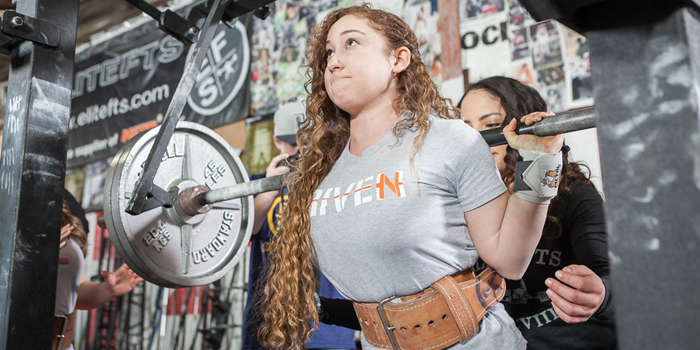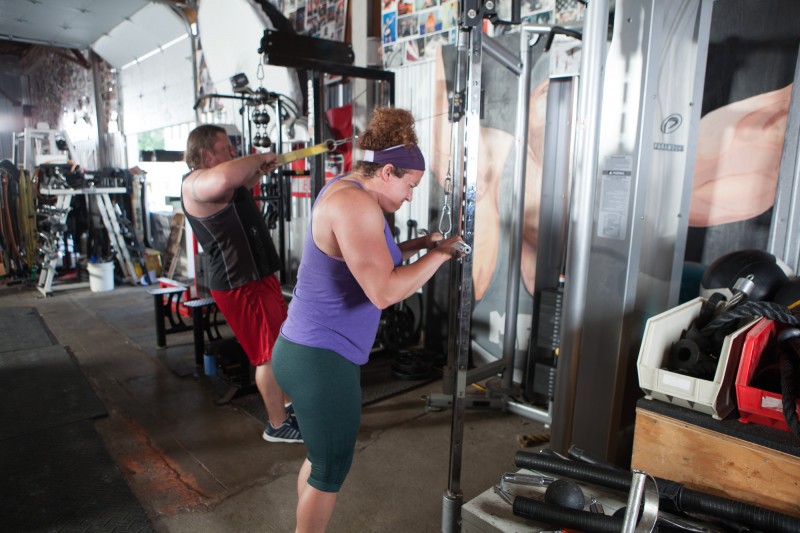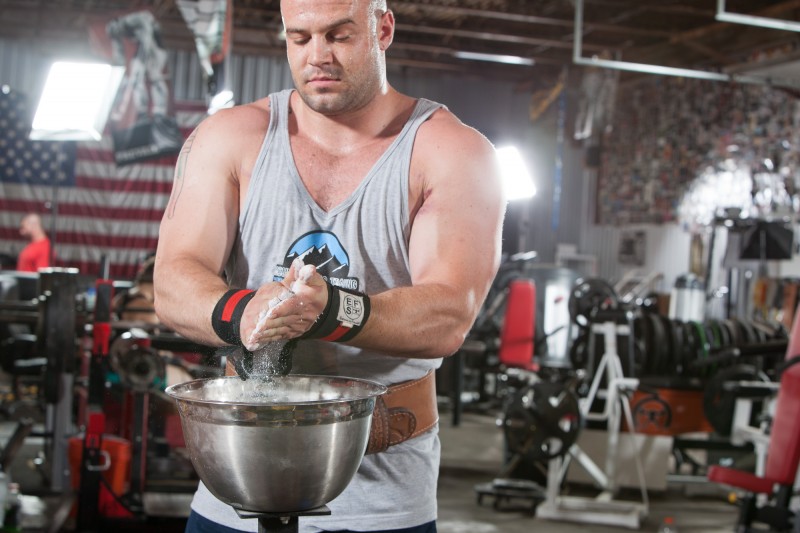
If you do anything related to working out, you have probably come across this age-old question: “Does muscle turn into fat?” Often times when people are introduced to the whole fitness world, they are told, “If you don’t exercise, your muscle will become fat.” Then, as you gain some iron experience, you become acquainted with the idea that this is impossible, and muscle can never turn into fat.
RECENT: Increase Muscle Mass with Massage
I’m going to make a wager—and I would assume that most people who train would firmly agree—that the inter-conversion between fat and muscle is not possible. Don’t believe me? Just do a quick Google search and you will see that numerous credible fitness and training websites have articles on the impossibility of this idea. But, despite all the evidence, you have to wonder where this fitness myth comes from and if there is any truth to it. So to answer that question, let’s talk about the types of cells in muscle and how this myth may have come to be.
Cell Types in Muscle
In your muscle right now there are a lot of cells. You have:
Satellite Cells (MSC)
MSCs are skeletal muscle stem cells. They are precursors (parents) to skeletal muscle cells. When an injury occurs, these cells are activated and either decide to become future muscle cells or replenish their current pool. More specifically, any activated MSCs expanded in number and either return to quiescence (sleep) or commit to becoming a muscle cell by turning into myoblasts1.
Myoblasts
Myoblasts are muscle precursor cells derived from MSCs. These cells fuse to areas of damaged (from injury or training) fibers and are essential for the repair and growth of muscle 2.
Myofibers
Myofibers are formed from the fusion of myoblasts into a new fiber or into pre-existing fiber. In adult muscle, the number myofibers is constant; however, the fiber can grow in size (hypertrophy). The daily wear and tear of life rarely are enough to induce increases in myofiber size. However, training-induced injury is more than sufficient.
Fibroblasts
Fibroblasts are connective tissue cells that make extracellular matrix and collagen.
Vascular Cells
Blood vessels, which are made of endothelial cells, are located between muscle fibers and function to provide a supply of nutrient and oxygen-rich blood. Vascular cells in muscle are muscle endothelial cells.
Immune Cells
Under normal conditions, resident immune cells live in your muscle. Acute injury and damage to the muscle trigger immune cells in your blood to traffic into the muscle as part of the immune response. I’ve talked about them a bit more in detail in other articles, as these guys are very important for muscle regeneration.
FAPS
When muscle regeneration gets compromised, fibrosis and adipocyte infiltration can occur3. Fibro/adipogenic progenitors (i.e., FAPs) are a type of multipotent mesenchymal progenitor cells that have both positive and negative roles in muscle regeneration. In normal conditions, they quickly expand to help the muscle repair process and then rapidly reduce in number. However, in conditions of chronic injury, they remain in the muscle and differentiate into either collagen making fibroblasts or fat cells (adipocytes). These cells are responsible for intramuscular fibrofatty infiltration4, 5.
Intramuscular Adipocytes
Intramuscular adipocytes are adipocytes located between muscle fibers within a muscle, whereas intermuscular adipocytes are fat cells that reside between muscle groups. Intramuscular adipocytes give rise to intramuscular adipose tissue (IMAT) depots, which are commonly found in the muscles of dystrophic, sedentary, obese, diabetic, and aged individuals. IMAT is associated with insulin resistance, loss of strength, limited mobility, and adiposity6. Furthermore, after adjusting for body mass (read: accounting for body mass, as it is not considered when looking at IMAT associations), IMAT is a good predictor of fasting blood glucose and insulin resistance.
Does Muscle Turn into Fat?
I believe that the notion that muscle can turn into fat stems from the high prevalence of fitness myths in the industry and the presence of diseased conditions where fatty infiltrates replace skeletal muscle (muscular dystrophy, sarcopenia, obesity, etc.). However, muscle and fat are two distinct organs, with two distinct functions. Muscle is a constant consumer of energy and fat is an organ that stores it. Despite their different purposes and functions, fat and muscle do share some common cell lineage. All cells come from a progenitor and then change into other cell types through the process of differentiation. A specific type of progenitor, called a mesenchymal stem cell, can turn into either fat or muscle cells, depending on which genes it expresses during the differentiation process. In the first step of differentiation, white adipocytes and muscle express different genes that allow them to ultimately become separate organs, respectively. In short, although muscle and fat both come from the same progenitor, muscles can’t turn into fat.
So if the muscle doesn’t turn into fat, why has this rumor persisted over the years? Well, it’s because the ratio of muscle to fat can change with conditions like reduced activity, degeneration, and/or increased caloric consumption. Let’s say you stopped working out but kept eating a lot of calories. When this happens, both your caloric need and stimulus to maintain muscle mass decrease. Over time, this can result in a horrible combination of muscle atrophy, fat hypertrophy, and fat hyperplasia (more fat cells). Over time, in an extreme (and unlikely) scenario like this, you might look in the mirror and start to think your muscles have been replaced by fat. But fear not: they have not, because (excluding extreme genetic and scientific manipulation) muscle can’t turn into fat.
References
- Wang, J. et al. Effect of exercise training intensity on murine T-regulatory cells and vaccination response. Scandinavian journal of medicine & science in sports 22, 643-652 (2012).
- Charge, S.B. & Rudnicki, M.A. Cellular and molecular regulation of muscle regeneration. Physiological reviews 84, 209-238 (2004).
- Natarajan, A., Lemos, D.R. & Rossi, F.M. Fibro/adipogenic progenitors: a double-edged sword in skeletal muscle regeneration. Cell cycle 9, 2045-2046 (2010).
- Uezumi, A., Fukada, S., Yamamoto, N., Takeda, S. & Tsuchida, K. Mesenchymal progenitors distinct from satellite cells contribute to ectopic fat cell formation in skeletal muscle. Nature cell biology 12, 143-152 (2010).
- Joe, A.W. et al. Muscle injury activates resident fibro/adipogenic progenitors that facilitate myogenesis. Nature cell biology 12, 153-163 (2010).
- Hausman, G.J., Basu, U., Du, M., Fernyhough-Culver, M. & Dodson, M.V. Intermuscular and intramuscular adipose tissues: Bad vs. good adipose tissues. Adipocyte 3, 242-255 (2014).












